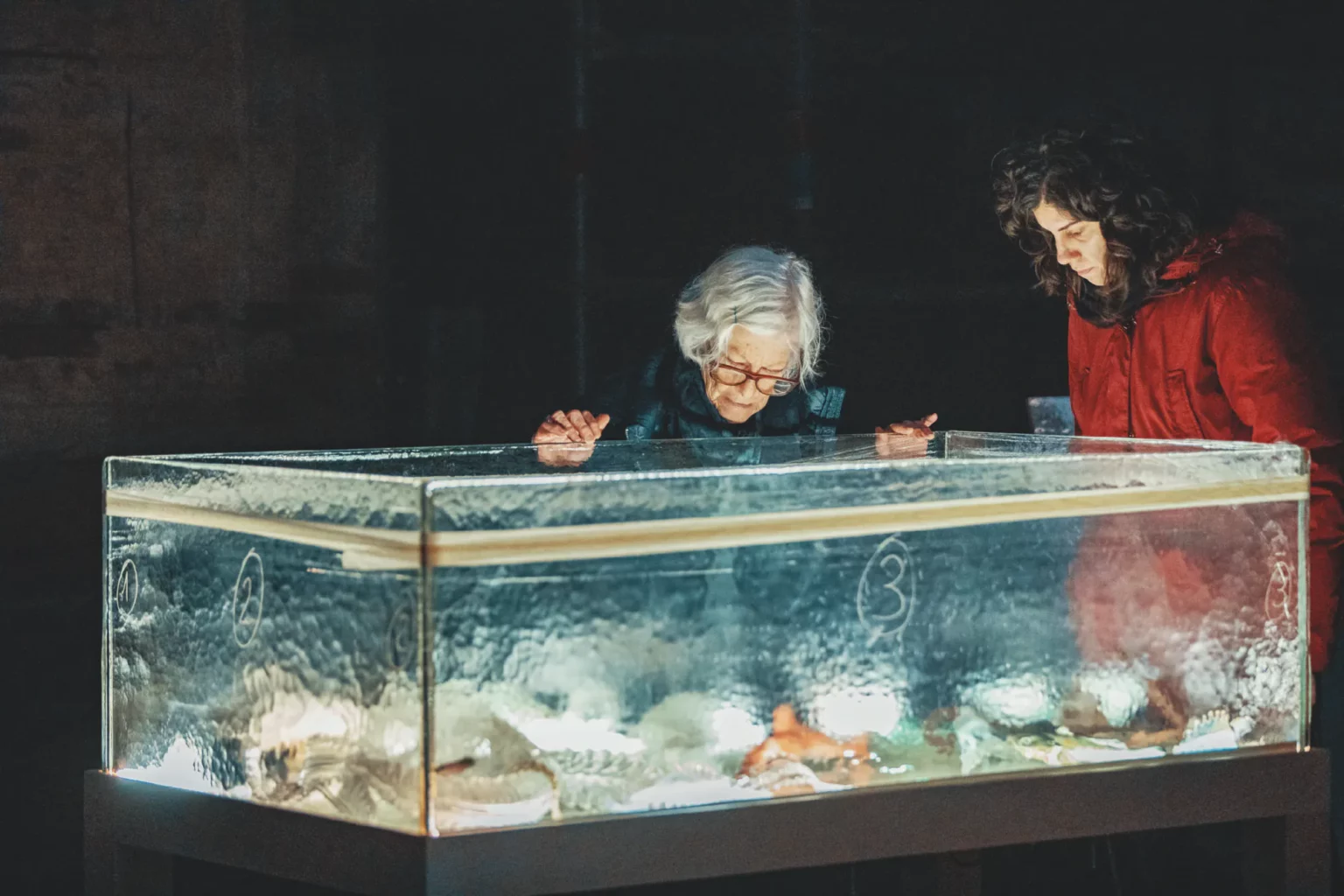
NSCAD University will award an honorary doctorate to iconic multimedia artist Joan Jonas at its convocation ceremony on May 13, 2025.
During her visit to Halifax, Jonas will deliver a convocation address to graduating students, meet with the NSCAD community for a conversation moderated by CBC journalist Mary Lynk, and attend the closing reception of the Graduate Student Exhibition at the Anna Leonowens Gallery.
“Joan Jonas’ career has always pushed boundaries, and in her art, she has continually, profoundly explored what it means to be human. I am so proud that she will be here to accept this honorary degree. Joan has a strong connection to Nova Scotia. Her approach to art making closely aligns with NSCAD’s rich history of embracing experimental and interdisciplinary practices. Her work has inspired and informed countless NSCAD artists. The opportunity for our students and faculty to meet Joan and hear more from her is life changing,” said Jana Macalik, acting president, NSCAD University.
Jonas is a world-renowned artist whose work is an eclectic mix of video, performance, installation, sound, text, and sculpture. She explores themes around feminism, self-image and human existence, mythology, and our relationships to animals and nature.
While living in Soho, New York in the ‘60s and ‘70s, Jonas encountered experimental and well-known artists, dancers, choreographers, composers and musicians. Being at the epicentre of creativity inspired Jonas to bring together many art forms at once, which she has done consistently in much of her work.
“I was immediately attracted by the possibility of a form in which I could employ or layer all disciplines. I didn’t see a major difference between a poem, a sculpture, a film, or a dance,” Jonas said.
Jonas’ experiments and productions from early in her career played an important role in creating and evolving video and performance art.
She was one of the first to explore new techniques using portable video cameras and TV monitors. This interest led to her career-long exploration of the connection between the human body and the recorded image, especially for women.
Influenced by literature, traditional Japanese Noh and Kabuki theatre, and art history, Jonas’ early experimental works probed how a given element—whether it’s distance, mirrors, the camera, or even wind—could transform one’s perception.
Jonas is known for creating the character Organic Honey, a doll-like figure with a mask frozen into an eerie smile. Organic Honey is depicted as an electronic seductress, posing and playing with feathers, dolls, monitors and mirrors. In Jonas’ signature video piece Organic Honey’s Visual Telepathy (1972) Jonas played two roles: herself, and her alter ego Organic Honey, to communicate the stereotypes and tropes around femininity.

In Jonas’ work, modern electronics and visual illusion are also inspired by old folktales about magical characters and mysterious events. Jonas worked with actress Tilda Swinton on Volcano Saga, a retelling of a traditional Icelandic tale about Gudrun. This was the first of many projects that depict female characters from folklore.
Jonas is well-known for her video performances from the 1970s and 1980s and the installations she subsequently developed from them: nature, landscapes and oceans; animals and children; live drawing; sound and music; mirrors and masks; images, objects and rituals collected from her travels, as well as her dogs.
In 2024, New York’s Museum of Modern Art organized a retrospective exhibition of Jonas’ work Joan Jonas: Good Night Good Morning. The exhibition presented the full breadth of Jonas’ career through drawings, photographs, notebooks, oral histories, film screenings, performances, and a selection of the artist’s installations.
Work from that exhibition Moving Off the Land II has been acquired by the National Gallery of Canada and the Art Gallery of Nova Scotia. The work pays tribute to the oceans and their creatures, biodiversity, and delicate ecology. Her new works dive deep into the ocean water, swim with the fish inhabiting it, and weave in literature and poetry by writers who have homed in on the liquid masses that cover two-thirds of the planet. That work will tour across Canada, starting in Cape Breton.
In the early 1970s, Joan Jonas came to Cape Breton with a group of artist friends and her then-partner, acclaimed sculptor Richard Serra (DFA 2004). She immediately fell in love with the location and its proximity to the ocean.
“We come from the sea. We don’t think about it very often, but our semicircular canals are like those of the fish. Our eyes are similar. We have backbones and the fish grew little legs and came out of the sea and then developed into what we are today…My idea is that we have a memory of that somewhere in our unconscious. We remember that we came from the sea. It’s not a memory. It’s a feeling. It’s in our DNA. I think that’s where all these stories come from and our desire to go back to the sea, our desire to swim underwater.”
Jonas is the recipient of many awards including The Whitechapel Gallery Art Icon (2016); The Maya Deren Award given by the American Film Institute (1989); and the Lifetime Achievement Award given by the Solomon R. Guggenheim Museum (2009). In 2024, Jonas was presented with the Nam June Paik prize, awarded to artists who have contributed to the development of contemporary art, mutual understanding, and world peace; and in 2018, Jonas was awarded the prestigious Kyoto Prize, given to individuals who have contributed significantly to the scientific, cultural and spiritual betterment of mankind.
Joan Jonas currently lives in New York City and spends her summers in Cape Breton.
